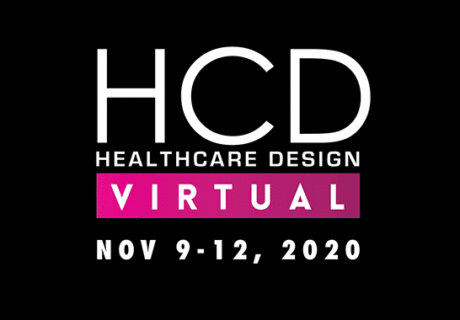Post-occupancy evaluations (POE) can bring much-needed research to a project and help broaden the healthcare design industry’s understanding and use of evidence-based design. However, it’s not uncommon for proposals about conducting one on a project to be met with a range of excuses from “it’s too time consuming” to the process being “too expensive” to “it’s difficult to defend doing a POE with clients,” said Jason Groneck, principal at GBBN Architects.
“We can and must do better with the projects we are tasked to deliver and challenging the status quo,” he said during the HCD Virtual session, “POE-fficient: How to Apply Evidence-based Design in Everyday Practice.” Groneck and colleagues Angela Mazzi , associate principal, and Timothy Hsu, project research leader, at GBBN Architects shared the business case for POEs, the firm’s process for delivering them, and tips on how to do a post occupancy evaluation in-house without introducing bias.
Calling POE a “process with a purpose,” Groneck shared some of their benefits, including being part of a robust working process with the client, having the opportunity to evaluate the project and compare the end result with the initial owner project requirements, and testing stated design and performance goals. “By learning from your last project you have a chance to apply knowledge to the next project and so on,” Groneck said.
Furthermore, he said it’s an opportunity to address issues collaboratively. “Often we find issues uncovered during a POE that can be easily addressed,” he said.
Acknowledging that perceived time and cost are some of the biggest concerns when it comes to POEs, Groneck said the process can range from a few to hundreds of hours depending on document procedures, adding that there’s a spectrum of tools available to assist, from homegrown to advanced technologies. He noted that design teams should clearly align expectations with their client about what will be evaluated, set qualitative and quantitative goals, and measure results. Overall, he added that a POE offers a mindset and process to guide and define work.
Mazzi said GBBN has worked to distill the POC process to a minimum amount of information to collect to deliver rigor to help justify the cost and value. “We always think we’re going to be impacting behavior for the better [through design],” she said. “A POE allows you to fine-tune the things you’re already doing.”
Taking a deep dive into the process, Mazzi said it’s important to start in predesign to begin collecting the right data and then study the same data at the end. This information can be collected through a variety of steps, including observations, surveys of patients and staff, interview/focus groups, and system metrics.
For observations, Mazzi recommended at least three visits at peak times to really be in the space to see how it functions. “If you go back a couple of times you may start to see patterns for unique moments,” she said.
Additionally, she noted that most healthcare organizations already collect system metrics, such as employee retention, on-site injuries, throughput, and patient satisfaction, that can be valuable information on a POE. Design team should ask their client for this data and then have a discussion on what metrics the client wants to impact and what design measures might address that. “We can demonstrate that decisions led to this positive reduction in a way the clients understand,” she said.
To ensure rigor in the process, Mazzi said GBBN builds a firewall between the design team and the POE team—a critical step especially when not using a third party. Furthermore, she said it’s important for the design team to be clear on what the POE should study and then to be curious about the findings, especially when something doesn’t turn out the way it was expected. “Learn from your failures,” she said.
The speakers shared some of the common mistakes on a POE, including conducting a study too soon—they recommended at least a year and not past three years—and not getting a representative sample, which can skew results. “N counts matter,” Mazzi said.
Overall, it’s important to be clear on the goals, including how, when, who, and what will be studied, Hsu said. “Getting the critical primary data—that’s the most important component.”
Missed HCD Virtual? Don’t worry. Registration is still open, and all sessions will be available on demand through the end of the year. Visit HCDvirtual.com for more information.
Anne DiNardo is executive editor of Healthcare Design. She can be reached at [email protected].













